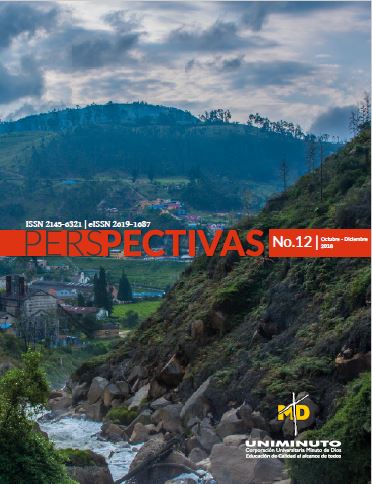Estudio de la dispersión de la enfermedad de chagas mediante autómatas celulares
Barra lateral del artículo
Cómo citar
Detalles del artículo
Contenido principal del artículo
Resumen
La enfermedad de Chagas se ha convertido en un problema de salud pública a lo largo de toda América Latina. La razón es el escaso conocimiento de la dinámica humano-vector-reservorio, influenciada por el cambio climático y vías alternas de contagio (transfusional, oral, congénita y probablemente sexual). Por lo tanto, un estudio profundo de ésta dinámica proporcionaría información relevante para formular propuestas encaminadas a un control definitivo de vectores y reservorios. Para este cometido, el estudio de dicha dinámica mediante Sistemas de Ecuaciones Diferenciales Parciales no ha entregado una propuesta plausible que cumpla cabalmente con este objetivo; por la misma complejidad de la dinámica. Es por eso que se propone a la comunidad científica la técnica de simulación Autómatas Celulares que es capaz de incorporar en forma sencilla los pormenores de la dinámica y promete dar luces definitivas para su entendimiento.
Referencias
Alkmim. (2013). Trypanosoma cruzi experimental congenital transmission associated with TcV and TcI subpatent maternal parasitemia.
Bice, D., & Zeledón, R. (1970). Comparison of infectivity of strains of Trypanoso macruzi (Chagas, 1909). J Parasitol, 56, 663-670.
Boggio, G. (2000). Modelo de regresión logística aplicado a un estudio sobre enfermedad de Chagas. Rio de Jainero: Universidade Federal do Rio de Janeiro.
Chopard, B., & Droz, M. (1999). Cellular Automata Modeling of Physical System. Cambridge University Cambridge.
Chimelli, L., & Scaravilli, F. (1997). Trypanosomiasis. Brain Pathol, 7, 599-611.
Coffieldet. (2013). Mathematical models for neglected tropical diseases: essential tools for control and elimination. USA: Elservier.
Spagnuolo. (2007). Congenital Trypanosomacruzi infectionin a non-endemic area. Case report: Transactions of the Royal Society of Tropical Medicine and Hygiene, 101, 1161 – 1162
Dias, J. C. P. (1979). Mecanismos de transmissão. En Z. Brener & Z. Andrade (eds), Trypanosomacruzi e Doença de Chagas, Guanabara Koogan, (pp. 152-174). Rio de Janeiro.
Hernández, G., & Torres, L. (1994). Autómatas celulares estocásticos. Lecturas Matemáticas, 15, 167-191.
Inaba, H., & Sekine, H. (2004). A mathematical model for Chagas disease with infection-age- dependent infectifity. Mathematical Biosciences,
190(1), 39-69. doi:10.1016 j.mbs.2004.02.004
Lambert, R. C., Kolibras, K. N., et al. (2008). The potencial for emergence of Chagas disease in the United States. Geospatial Health, 2(2).
Mice. (2001). Experimental Transmission of Trypanosoma cruzi Through the Genitalia of Albino. Universidade Federal do Rio de Janeiro: UFRJ
Musso, V. (2008). Desarrollo de Software para la Simulación Espacio-Temporal de la Dinámica Poblacional de Roedores Transmisores de la Fiebre Hemorrágica. Recuperado de http://rdu.unc.edu.ar/bitstream/handle/11086/11/14319.pdf?sequence=1
OMS. (2003). Cambio Climático y salud humana. -Riesgos y respuestas. Resumen. Ginebra-Suiza.
Oquendo, W. F., & Muñoz, J. D. (2008). Simulación de la Propagación de una Epidemia Utilizando un Autómata Celular de Difusión Bidimensional. Revista Colombiana de Física, 40(2).
Sarmiento. (2004). Trypanosoma Cruzi-associated cerebrovascular disese: a case-control study in eastern Colombia. Journal of Neurological Sciences, 217, 61-64.
Scorza, C., Herrera, L., & Urdaneta-Morales, S. (1996). Trypanosomacruzi: histopathology in mice infected with strains isolated from Didelphismarsupialisfrom the valley of Caracas (Venezuela). Acta Cient Venez, 47, 244-247.
Xiaoyi, H., & Li-Shi, Luo. (1997). Theory of the lattice Boltzmann method: From the Boltzmann equation to the lattice Boltzmann aquation. Phys. Rev. E, 56, 6811-6817.
Artículos más leídos del mismo autor/a
- Edgar Pérez, Kempes Lozada Romero, Una experiencia pedagógica hacia la construcción de paz en el ámbito universitario , Perspectivas: Vol. 3 Núm. 12 (2018): Octubre-Diciembre
- Kempes Lozada Romero, Jairo Rodríguez Henao, Prácticas profesionales del Centro Regional Soacha: una necesidad regional , Perspectivas: Vol. 3 Núm. 12 (2018): Octubre-Diciembre

